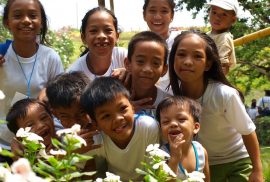People in Southeast Asia and surrounding areas are believed to have the same root or from the same source. It is characterized by several cultures, customs, and values that are still reflected in the life of people in Southeast Asia and beyond. This thesis was presented by Ronnie Hatley Ph.D in his presentation at SEA Talk discussion of Center for Southeast Asian Social Studies in collaboration with American Institute For Indonesian Studies. This discussion was held on Thursday, February 18, 2016, followed by dozens of academics and researchers from various scientific backgrounds.
February
It has become a truth that the ASEAN community consists of various cultures, ethnicities and beliefs. Understanding the ASEAN community is clearly inseparable from the differences that exist. In this case, trust that grows and develops becomes part of the community inherent in their lives.
ASEAN became a gathering area and the development of a number of beliefs through trade channels and through colonization in the past. But basically, the ASEAN community itself has existed and has developed a number of beliefs since hundreds or thousands of years before, even its existence continues to be maintained as in indigenous peoples who have faith in nature.
ASEAN, Association of Southeast Asian Nations, is a geo-political and economic organization of countries located in Southeast Asia, which was formed on 8 August 1967, with signing the Bangkok Declaration by Indonesia, Malaysia, Philippines, Singapore and Thailand. As set out in the ASEAN Declaration, one of the aims and purpose of ASEAN is to accelerate the economic growth, social progress and cultural development in the region through joint endeavours in the spirit of equality and partnership in order to strengthen the foundation for a prosperous and peaceful community of Southeast Asian Nations.



